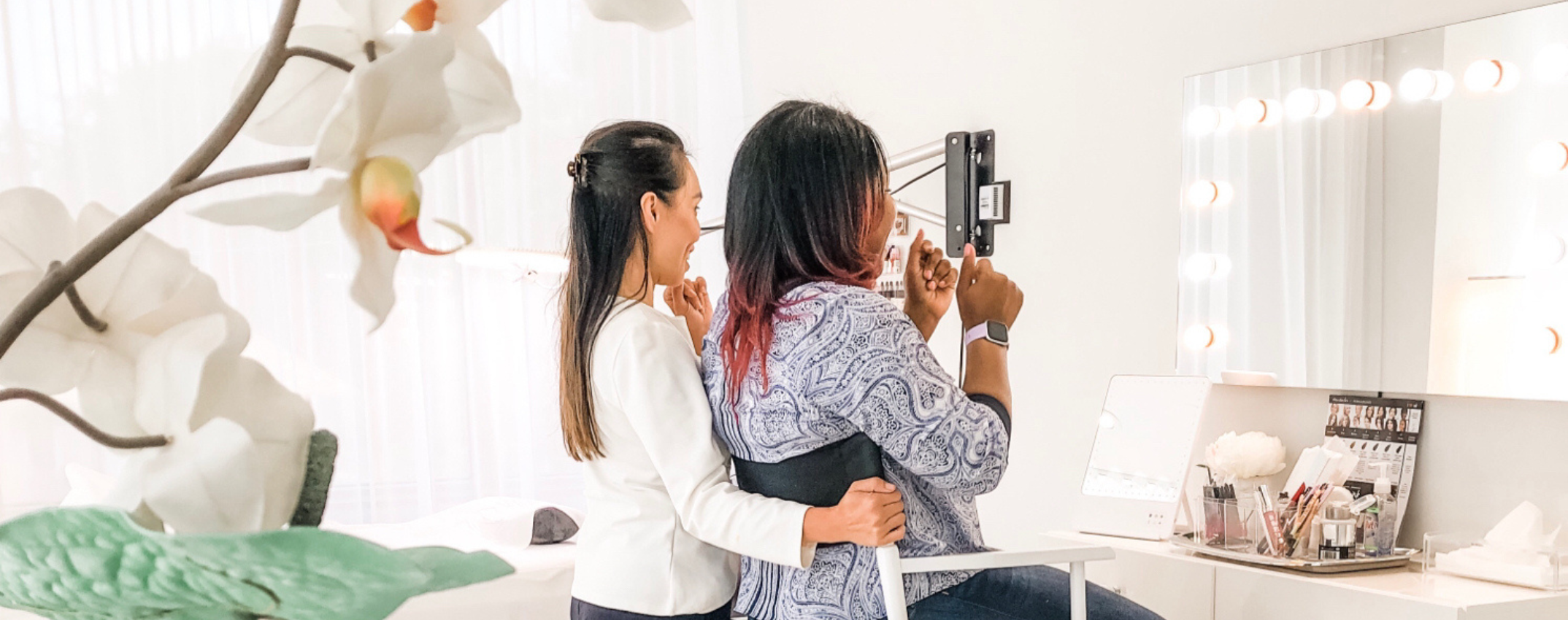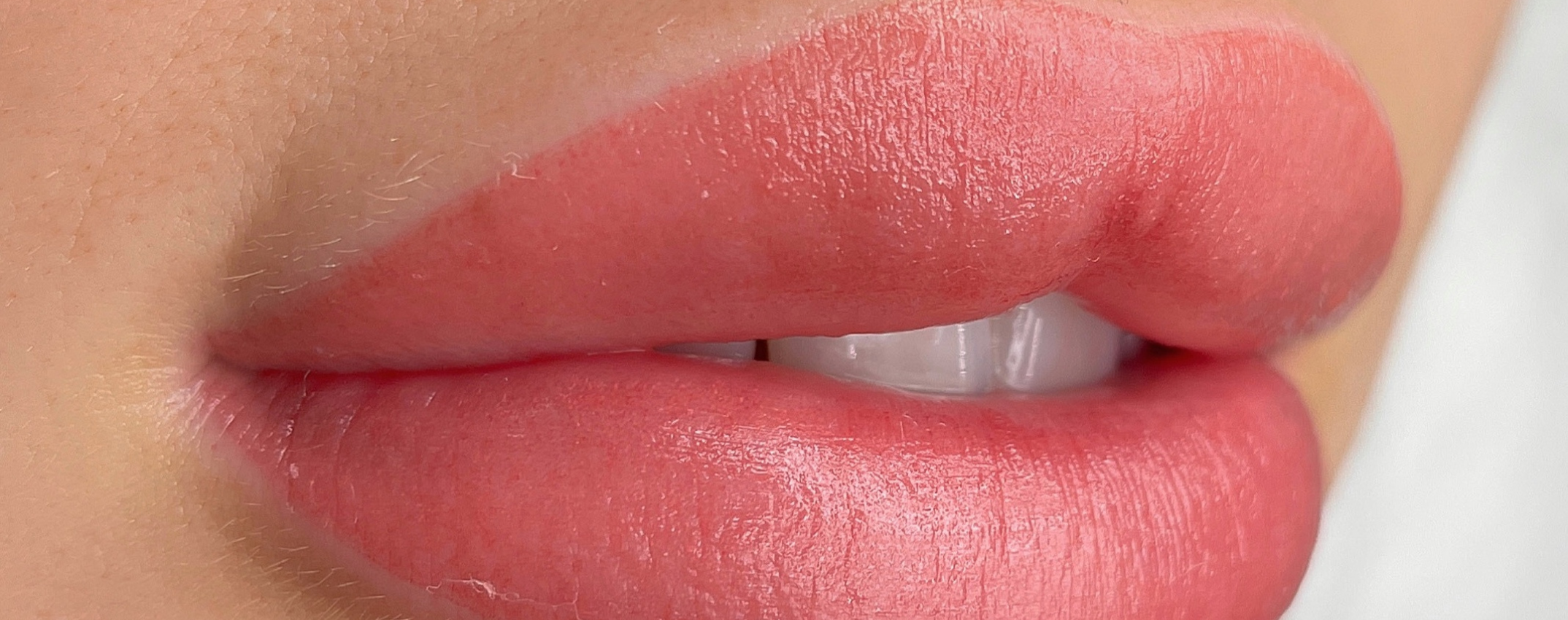
Restorative Areola Tattooing: Empathy, Healing, and Artistry
Restorative areola tattooing is both emotional and technically challenging, often marking the final step in a profound journey.
While honing your technical skills is crucial, enhancing your client's experience is equally vital. It fosters trust and comfort, and aids in their healing process.
Our blog explores this essential facet of areola tattooing, offering insights and strategies for better client connections.

Areola tattoo in progress courtesy of PRO Team artist Jill Hoyer using I ❤️ INK Needle Cartridge
CLICK HERE to shop our full range of needle cartridges
Understand your client’s motivations by connecting with their journey.
Understanding your client's motivations is key, as they may come from diverse backgrounds and seek tattooing for various reasons:
- Breast cancer survivors:
People who have undergone mastectomy or breast reconstruction surgery may seek areola tattooing to regain a natural appearance. For those who have undergone nipple reconstruction surgery, areola tattooing can add realistic color and dimension to the newly created nipples.
- Individuals with congenital differences:
Those born with congenital differences, such as the absence or irregularity of the areola, may look to reconstructive tattooing for help with achieving a more typical appearance.
- Post-surgery patients:
Individuals who have had breast reduction, augmentation, gender confirmation procedures, or other breast surgeries may opt for areola tattooing to enhance aesthetic results or achieve improved symmetry.
- Scarring or injury survivors:
People who have experienced breast injuries or accidents resulting in scarring may seek areola tattooing to disguise scarring.
- Post-aesthetic enhancement:
Some clients may choose areola tattooing purely for cosmetic reasons, aiming to enhance the overall appearance of their breasts with improved color or shape.
Recognizing this diversity empowers you to provide personalized care that goes beyond technical expertise.
Familiarize yourself with medical terms to engage in informed conversations about your client’s journey and expectations.

During your consultation, it's essential to discuss your client's surgical history, including any complications, and establish their goals. Clients seeking restorative areola tattooing may have undergone various breast reconstruction procedures, such as:
- DIEP flap (Deep Inferior Epigastric Perforator Flap):
Using the body’s own tissue, typically from the lower abdominal area without sacrificing the abdominal muscles.
- GAP flap (Gluteal Artery Perforator):
Taking tissue from the buttock area, including skin, fat, and sometimes muscle.
- Implants:
Using silicone or saline implants to recreate the breast or chest shape. Implants are often used in conjunction with other reconstructive procedures.
- Latissimus Dorsi flap:
Using muscle, skin, and fat from the upper back, often in combination with implants.
- SIEA flap (Superficial Inferior Epigastric Artery Flap):
A specialized form of DIEP flap reconstruction, utilizing the superficial blood vessels of the lower abdominal tissue with a microsurgical approach that minimizes disruption to the abdominal muscles.
- TRAM flap (Transverse Rectus Abdominis Myocutaneous Flap):
Employing a portion of the rectus abdominis muscle along with skin and fat from the lower abdominal area.
- TUG (Transverse Upper Gracilis):
Transferring tissue from the inner thigh area, specifically the gracilis muscle and surrounding tissue.
It's important to note that clients seeking restorative areola tattooing may not have necessarily undergone cancer treatment. Other surgical procedures they may have experienced include:
- Breast reduction surgery:
Breast reduction surgery, or reduction mammoplasty, minimizes the overall volume of the breasts, often to alleviate the discomfort and health issues associated with a large chest. This procedure involves removing excess breast tissue and skin, which may alter the shape, size, or color of the existing areolas.
- Mastopexy:
Mastopexy, also known as a breast lift, is a surgical procedure designed to lift and reshape sagging breasts. Often, this procedure may involve repositioning or resizing the areolas.
- Skin graft procedures:
Skin grafts may be used to treat a variety of medical conditions, such as severe burns or traumatic injuries. If a skin graft is applied to the breast area, it may result in changes to the appearance of the areolas in size, color, texture, or placement.
- Top surgery:
Individuals undergoing top surgery as part of their gender confirmation process may opt for chest masculinization or chest feminization surgery. Depending on the desired outcome, surgical areola resizing may result in the need for future repigmentation.
Each procedure has its considerations and benefits, tailored to the client's anatomy, history, and goals. Familiarizing yourself with these surgeries and reconstruction techniques will enhance your ability to provide personalized and empathetic services.

Cultivate a safe space by offering empathy and building trust with your client.
Creating a safe and supportive environment is paramount for an enhanced client experience. This fosters a strong emotional connection and builds trust and rapport between you, the artist, and the client. Empathy, the ability to understand how someone feels, is essential in this process. Here are ways to demonstrate empathy:
- Align on goals and expectations:
Tailor the procedure to the client's goals for style, areola size, color, and placement, and involve the client in all decision-making. Ensure that both you and the client have a clear and shared understanding of the desired outcome.
- Consider your sensitivity to trauma:
Be aware that some clients may have experienced trauma related to their initial injury, surgery, or cancer. Approach the procedure with extra sensitivity, and ask if there are any triggers or concerns you should be aware of.
- Offer emotional support:
Offer emotional support by being a compassionate presence. Reassure the client that you understand their journey and that you are there to help them in their healing process.
- Have respect for privacy
Respect the client's privacy and modesty by offering a private space for changing or disrobing along with draping options to ensure their comfort and dignity. Make sure to get clear approval before sharing photos, and always offer to crop the client’s face or recognizable features out.
- Maintain body positivity:
Promote a body-positive environment by avoiding judgmental or critical comments about the client's body. Encourage self-acceptance and self-love, while remaining open to any requests they have about their desired result.
- Make a personal connection:
Build trust and connection on a personal level by finding something positive to talk about that you share in common. You can inquire about their music preferences or ask about family and pets and record this information for future reference in your procedure notes
- Practice active listening skills and open communication:
Use empathetic and reassuring language to convey understanding and support to the client, assuring them that their feelings and concerns are valid. Maintain clear and open communication, addressing their concerns, questions, and preferences, and explain each step of the process.
- Read and identify body language:
Non-verbal cues such as facial expressions, posture, and gestures can provide valuable insights into your client’s comfort level and emotional state. Use this information to adjust your approach and provide additional support or reassurance as needed.
- Uphold effective pain management:
Be attentive to the client's comfort during the procedure, keeping in mind that certain areas may be numb, while other spots may be extra sensitive. Offer breaks if needed and provide options for pain management, such as numbing creams like Zensa as a primary (on unbroken skin), and Tag 45 or Ultra Duration for your secondary (once the skin is broken).

Relating with empathy creates a safe space for all emotions, recognizing the vulnerability of the client's journey. Your role is to ensure they feel protected, supported, and empowered throughout the process.
Build lasting relationships and foster a sense of community post-procedure.

Following up with your client post-procedure to stay in touch, especially after such an intimate treatment, is crucial for ensuring their ongoing comfort and satisfaction. It demonstrates your dedication to their journey and builds lasting relationships based on your newly built trust and empathy.

Areola tattoo in progress by Terry Lively, courtesy of The Collective course: 3D Areola Tattooing
In closing, as artists in the realm of restorative areola tattooing, we play a profound role in our clients' healing and self-discovery. We have the power to transform lives through our skills and compassion. By offering empathetic, customized, and supportive services, you can help clients regain their confidence, dignity, and sense of self after their challenging journeys. Through our expertise and compassion, we not only enhance appearances but also restore confidence, dignity, and hope.
Together, as a community, we make a lasting impact on those who've faced adversity. We are not just tattoo artists; we are healers and advocates for empowerment. Let's continue nurturing our clients' sense of self and resilience, leaving them not only with a beautifully crafted areola tattoo but also renewed self-assuredness.
Thank you for being part of this remarkable journey. Together, we make a difference, one tattoo at a time.
Explore our online course, "3D Areola Tattooing on The Collective," for in-depth technical knowledge and guidance by PMU veteran Terry Lively. This course is suitable for experienced artists, with a minimum of 3 years in the field and machine experience. Areola tattooing experience is not required.

CLICK HERE to enroll into 3D Areola Tattooing by Terry Lively




Leave a comment
This site is protected by hCaptcha and the hCaptcha Privacy Policy and Terms of Service apply.